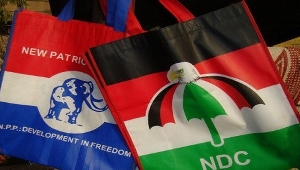Business News of Monday, 8 June 2020
Source: Class FM
Banks' capacity to withstand shocks improves - BoG stress tests reveal
Mid-year and end-year stress tests of the banking sector conducted by the Bank of Ghana in 2019 revealed that the capacity of the banking sector to withstand tail risks had improved.
Notably, the banking sector was robust to interest rate, credit, liquidity and exchange rate shocks.
The stress tests were carried out to evaluate the resilience of the sector to extreme but plausible shocks
According to the 2019 BoG Annual Report, the Central Bank continued to undertake surveillance of the financial system to assess and monitor potential systemic risks, market conduct breaches and AML/CFT & P deficiencies for prompt remedial action.
In 2019, capital adequacy, asset quality, efficiency and earning profile of banks improved significantly, while liquidity measures remained broadly stable, adding, the improvements observed during the year, were on the back of the banking sector clean-up.
Solvency
The report said solvency of the banking sector continued to improve during the year under review.
The Domestic Money Banks (DMBs’) Capital Adequacy Ratio, computed in accordance with the Capital Requirement Directive under the Basel II/III capital framework, was 17.5%, above the prudential requirement of 13.0%.
The DMBs’ equity position increased significantly to GH¢17.6 billion in 2019, from GH¢16.9 billion in 2018. Asset quality also improved significantly, with the nonperforming loans (NPLs) ratio declining to 13.9%, from 18.2% over the same period last year.
Liquidity
The DMBs remained broadly liquid with liquid assets to total deposits ratio of 92.1% and liquid assets to volatile funds of 150.2% at the end of December 2019.
SDIs and other licensed institutions
Meanwhile, the combined assets of Specialized Deposits-Taking Institutions (SDIs) at the end of December 2019 stood at GH¢12.32 billion, from the previous position of GH¢16.50 billion.
This represented 8.7% of the entire banking industry’s assets.
The decline was due to the revocation of the licences of identified weak, dormant and insolvent institutions in 2019.
Instructively, the major source of funding for the sector (deposits) declined by 22.7%, year-on-year to GH¢7.9 billion, compared to 19.8% growth in 2018.
Rural and Community Banks
The total number of licensed RCBs stood at 144 at the end of December 2019.
The sector recorded total assets of GH¢4.69 billion as at end-December, 2019, reflecting an increase of GH¢550 million over the end-December 2018 position.
The CAR of RCBs also improved to 12.7% at end-December, 2019, from 10.5% at end-December 2018, and above the prudential threshold of 10%.
Microfinance Sector
The total number of licensed MFIs at the end of December 2019 was 180.
This follows the revocation of the licences of 386 institutions.
The Capital Adequacy Ratio (CAR) of the deposit-taking MFIs was however 31% at the end of December 2019, compared to the CAR of 8.0% at the end of December 2018.











